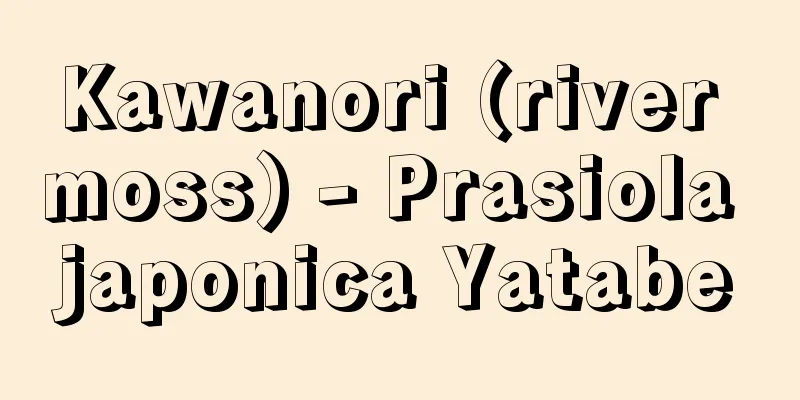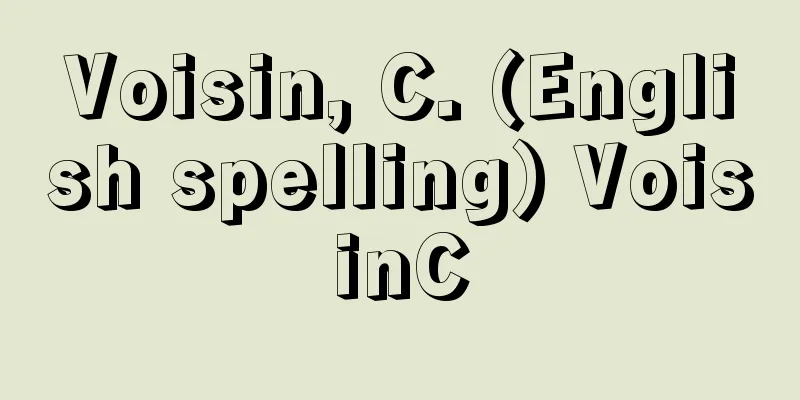Sakamoto Hanjiro - Sakamoto Hanjiro

|
Western-style painter. Born in Kurume City on March 2, 1882, as the son of a samurai of the former Arima Domain. During his senior high school years, he studied Western-style painting under Mori Miyoshi, and one of his classmates was Aoki Shigeru. In 1902 (Meiji 35), he moved to Tokyo and became a pupil of Koyama Shotaro's Fudosha school. The following year, he studied at the newly established Taiheiyo Gakai Institute and continued to exhibit at the association's exhibitions. In 1907, he exhibited "A Piece of Oshima" at the Tokyo Prefecture Industrial Exposition, for which he won a third-place medal, and in the same year exhibited at the first Bunten exhibition. He worked for Tokyo Pack for a while, and became a member of the magazine "Hosun." In 1917, he won a commendation for "Harmony" at the 4th Bunten exhibition, and a third-place prize for "Coast" at the 5th Bunten exhibition, but in 1914 (Taisho 3), he participated in the founding of the independent Nikakai. He thoroughly experimented with impressionism, eventually going beyond its sensory limitations and moving towards a pursuit of the essential existence of things. He traveled to France from 1921 to 1924, where he entered the Académie Colarossi and exhibited works such as "Woman with a Hat" at the Salon d'Automne. He made great progress in his oil painting technique and gained confidence in his own original way of painting. After returning to Japan, he did not move to Tokyo but settled in his hometown, setting up a studio in Yame, Fukuoka Prefecture in 1931 (Showa 6). From the beginning of the Showa era, he sought out horses all over Kyushu and produced many works such as "Three Horses at War," and during the war he used still lifes from his surroundings as his subject matter. After World War II, he maintained a free and independent position, and although he was recommended to become a member of the Japan Art Academy, he declined. He developed a meditative and modern oriental realism in his painting, preferring Noh masks and other subjects. He received the Mainichi Art Award in 1953 for "A Horse Rising from the Water." The following year, he exhibited at the Venice Biennale. He received the Order of Culture in 1956 and the Asahi Prize in 1963. In his final years, he produced many fantastic works with the moon as a motif, such as "Ghostly Light." He died on July 14, 1969 at his home in Yame City. [Tadao Ogura] "Sakamoto Hanjiro Collected Works" Revised and expanded edition (1970, Chuokoron-Shinsha)" ▽ "Ogura Tadao's commentary on "Complete Collection of Contemporary Japanese Art 11: Sakamoto Hanjiro" (1972, Shueisha)" ▽ "Kawakita Michiaki's "Sakamoto Hanjiro" (1974, Chuokoron-Shinsha Bijutsu Shuppan)" Source: Shogakukan Encyclopedia Nipponica About Encyclopedia Nipponica Information | Legend |
|
洋画家。明治15年3月2日、久留米(くるめ)市に旧有馬藩士の子として生まれる。高等小学校時代に森三美(みよし)について洋画を学ぶが、同級生に青木繁(しげる)がいた。1902年(明治35)上京して小山(こやま)正太郎の不同舎に入門、翌年新設の太平洋画会研究所に学び、同会展覧会に出品を続ける。07年、東京府勧業博覧会に『大島の一部』を出品して三等賞牌(しょうはい)を受けるほか、同年第1回文展に出品。しばらく東京パックに入社のほか、『方寸(ほうすん)』誌の同人となる。10年第4回文展で『張り物』が褒状、第5回文展で『海岸』が三等賞を受けたが、14年(大正3)在野の二科会の創立に参加した。印象主義を徹底して試み、やがてその感覚的な限界を超えて、物の存在の本質的な追求へと歩みを進めていく。 1921~24年渡仏し、アカデミー・コラロッシに入り、『帽子を持てる女』などをサロン・ドートンヌに出品。大いに油彩技術の進歩をみるとともに、自己本来の画道への自信を深め、帰国後は上京せず郷里に定住、31年(昭和6)福岡県八女(やめ)にアトリエを構えた。昭和初めから九州各地に馬を求めて題材とし、『放牧三馬』ほか数多く制作するほか、戦時中は身辺の静物を題材としている。第二次世界大戦後は自由な無所属の立場を守り、芸術院会員に推されたが辞退し、能面などを好んで主題として瞑想(めいそう)的な東洋の近代的写実画境を深めた。『水より上がる馬』により53年度の毎日美術賞を受けた。翌年ベネチア・ビエンナーレ展に出品。56年に文化勲章、63年に朝日賞を受けた。最晩期には『幽光』など月をモチーフにした幻想的作品が少なくない。昭和44年7月14日八女市の自宅で没した。 [小倉忠夫] 『『坂本繁二郎文集』増補改訂版(1970・中央公論社)』▽『小倉忠夫解説『現代日本美術全集11 坂本繁二郎』(1972・集英社)』▽『河北倫明著『坂本繁二郎』(1974・中央公論美術出版)』 出典 小学館 日本大百科全書(ニッポニカ)日本大百科全書(ニッポニカ)について 情報 | 凡例 |
>>: Sakamoto Snowbird - Sakamoto Setcho
Recommend
Seasonal word - Kigo
Edited by Kazuumi Yamashita (1) Major seasonal th...
Zesen, P.von (English spelling)
...His fame was due entirely to the explosive suc...
Hendrix, J.
…In the mid-1960s, psychedelic music emerged on t...
Influx - Influx
... The Khoisan language family is characterized ...
Elsa Morante
Italian female writer. Born in Rome. First wife o...
recitativo accompagnato (English spelling) recitativo accompagnato
...It is accompanied only by basso continuo and l...
Gamou-no
The fields spread across Gamo-gun, Omi Province, o...
Ansei Tokai Earthquake
An earthquake that occurred off the coast of Tokai...
Grignard reaction - Grignard reaction
A general term for reactions involving organomagne...
Asphalt Jungle
A classic post-World War II American crime film ma...
Macula
The central part of the retina is the area where ...
Manzanar
... After World War I, the importance of immigrat...
Süssmayr, FX (English spelling) SussmayrFX
…A monument to Mozart was erected at Vienna's...
Administrative investigation - administrative investigation
(1) The activity of collecting, organizing, and an...
Brassicaceae - Brassicaceae
Dicotyledonous, polypetalous. Herbaceous, with al...









